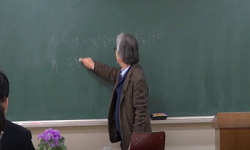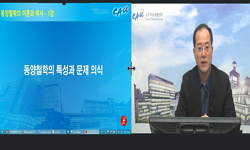The purpose of this paper was to find examples of a group of interpretations while biased toward the translation of the manuscripts of Myeongnology, and to apply the criteria of the translation of the manuscripts of Myeongnology in accordance with the...
http://chineseinput.net/에서 pinyin(병음)방식으로 중국어를 변환할 수 있습니다.
변환된 중국어를 복사하여 사용하시면 됩니다.
- 中文 을 입력하시려면 zhongwen을 입력하시고 space를누르시면됩니다.
- 北京 을 입력하시려면 beijing을 입력하시고 space를 누르시면 됩니다.

명리고전(命理古典) 번역(飜譯) 방법론(方法論)에 관한 엄복(嚴腹)의 신(信)·달(達)·아(雅)의 번역 기준 연구(硏究) = A Study on the Translation Criteria of ENFU SIN, DAL, AH on the Translation Methodology of Myeongri Classical
한글로보기https://www.riss.kr/link?id=A106599651
- 저자
- 발행기관
- 학술지명
- 권호사항
-
발행연도
2020
-
작성언어
-
-
주제어
동양철학 ; 번역기준 ; 명리학 ; 등가성 ; 출발언어 ; 도착언어 ; Oriental philosophy ; Translation criteria ; Myeongnology ; Equivalence ; Source language ; Taget lanruage
-
KDC
300
-
등재정보
KCI등재후보
-
자료형태
학술저널
-
수록면
73-87(15쪽)
-
KCI 피인용횟수
0
- DOI식별코드
- 제공처
-
0
상세조회 -
0
다운로드
부가정보
다국어 초록 (Multilingual Abstract)
The purpose of this paper was to find examples of a group of interpretations while biased toward the translation of the manuscripts of Myeongnology, and to apply the criteria of the translation of the manuscripts of Myeongnology in accordance with the criteria of SIN(信), DAL(達), and AH(雅) of EOM-BOK. Since the original author’s intention should be faithfully reflected, the translation of the original book should be applied to the interpretation required at that time based on the translation corresponding to SIN(信), the translation corresponding to DAL(達) and the AH(雅) translation corresponding to the elegant interpretation. Translation is the most important purpose of implementing equivalence in the intentions of the original author, so the equivalence of the Source language and the Taget language should be observed even in the differences of expression. Up until now, the question of the translation of the nouns has mainly focused on the translation of the stylistic system by focusing on trying to overcome the structural differences of the language. Translation now requires the implementation of semantic equivalence as well as primarily a stylistic approach. This researcher wanted to open a new horizon for the study of classical literature in Myong-hak by presenting a standard for the translation of robes that achieve the intent and equivalence of the original author in the translation of the original text.
참고문헌 (Reference)
1 "한국고전용어사전" 세종대왕기념사업회 2001
2 남기심, "표준 국어문법론" 도서출판 박이정 2017
3 최정화, "통역/번역 노하우" 도서출판 넥서스 2001
4 최기천, "중국어 번역법" 학고방 2014
5 임정환, "제대로 보는 滴天髓闡微 1,2,3,4" 원제역학연구원 2006
6 이선종, "적천수천미 해설강의 상,하" 도서출판 장원 2003
7 예광해, "적천수천미" 도서출판 1998
8 이석규, "우리말답게 번역하기" 역락 2002
9 김효중, "번역학" 민음사 1998
10 "문학비평용어사전" 한국문학평론가협회 2006
1 "한국고전용어사전" 세종대왕기념사업회 2001
2 남기심, "표준 국어문법론" 도서출판 박이정 2017
3 최정화, "통역/번역 노하우" 도서출판 넥서스 2001
4 최기천, "중국어 번역법" 학고방 2014
5 임정환, "제대로 보는 滴天髓闡微 1,2,3,4" 원제역학연구원 2006
6 이선종, "적천수천미 해설강의 상,하" 도서출판 장원 2003
7 예광해, "적천수천미" 도서출판 1998
8 이석규, "우리말답게 번역하기" 역락 2002
9 김효중, "번역학" 민음사 1998
10 "문학비평용어사전" 한국문학평론가협회 2006
11 김기승, "명리학사" 다산글방 2018
12 "漢韓大字典" 민중서림 1982
13 예광해, "滴天髓闡微 상,하" 도서출판 지남 1999
14 김정혜, "滴天髓闡微 上,下" 이담북스 2013
15 任鐵樵, "滴天髓闡微" 武陵出版有限公司 2006
16 김기승, "滴天髓闡微" 다산글방 2017
17 김동규, "完譯 滴天髓闡微" 명문당 2012
동일학술지(권/호) 다른 논문
-
재활용수의 선택적 자동공급이 가능한 플라스틱류 양변기 소비자 선호도에 관한 연구
- 산업진흥원
- 최태월 ( Tae-wol Choi )
- 2020
- KCI등재후보
-
전략적 인적자원관리가 혁신행동과 조직성과에 미치는 영향에 관한 연구
- 산업진흥원
- 김문준 ( Moon-jun Kim )
- 2020
- KCI등재후보
-
- 산업진흥원
- 두성림 ( Cheng-lin Du )
- 2020
- KCI등재후보
-
- 산업진흥원
- 박찬준 ( Chan-jun Park )
- 2020
- KCI등재후보




 ScienceON
ScienceON KISS
KISS








